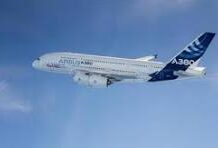Qantas has posted another massive COVID-related loss, but is optimistic international travel will resume before Christmas.
The airline lost $1.73 billion in the 2020-21 financial year, as the global COVID pandemic raged.
The loss is actually a little smaller than the previous year’s $1.96 billion loss, despite revenue plunging by 58 per cent to less than $6 billion, due to an aggressive cost-cutting campaign and staff stand-downs.
However, Qantas estimates that the pandemic has so far cost it around $16 billion in lost revenues over the past two financial years, with that set to rise to $20 billion by the end of this calendar year.
“This loss shows the impact that a full year of closed international borders and more than 330 days of domestic travel restrictions had on the national carrier,” Qantas chief executive Alan Joyce said.
For now, Qantas is assuming that current domestic border closures will remain in place until early December, which will wipe about $1.4 billion off its top-line profit numbers for the current half year.
Offsetting that, Qantas said it had already achieved $650 million per annum of ongoing savings from its cost-cutting program, while the current eight-week domestic staff stand-down will be extended while New South Wales and Victoria remain locked down.
The airline said it had paid down around half a billion dollars of debt and was looking at a potential land sale in Mascot, near Sydney Airport, to pay down hundreds of millions more.
In the meantime, Qantas said it had $3.8 billion in cash and available debt facilities to finance it through its current losses.
Qantas’s Christmas wish
The airline is also hopeful of, and planning for, the resumption of some international flights before Christmas.
“It’s obviously up to government exactly how and when our international borders re-open, but with Australia on track to meet the 80 per cent trigger agreed by National Cabinet by the end of the year, we need to plan ahead for what is a complex restart process,” Mr Joyce said.
“We can adjust our plans if the circumstances change, which we’ve already had to do several times during this pandemic.
Qantas said the initial routes being planned for include Singapore, the United States, Japan, United Kingdom and Canada, while it expects the New Zealand travel bubble will resume in some form by mid-December.
The airline said it was hoping to restart flights to Hong Kong in February and the rest of the Qantas and Jetstar international network was set to open up from April 2022, with capacity increasing gradually.
So hopeful is the airline of an immediate rebound in travel demand when borders reopen that it has plans to bring back five of its A380 Airbus super jumbos earlier than expected, in 2022, although it is also planning to retire two, bringing its fleet of the planes down to 10.
Flight Centre sees travel demand rebound in US, UK
Meanwhile, travel agency Flight Centre has recorded a 35 per cent smaller loss ($433 million) than last year, helped by the reopening of travel in some of its overseas markets, such as the US and UK.
“When lockdowns have lifted and borders have re-opened — as they have just started to do in a more meaningful way outside of Australia and New Zealand — we have typically seen immediate and strong travel recovery, which is what we have now started to see in key locations like the US, Canada and Europe,” said Flight Centre chief executive Graham Turner.
“The near-term outlook has also improved in the UK, another large and important market for our company, with most restrictions now lifted and people learning to live with the virus.”
However, while Flight Centre’s sales revenue rose 48 per cent, or $76 million, in the second half of the financial year compared to the first, it said costs also rose 8 per cent, largely due to the loss of $41 million in government employment subsidies, mainly due to the end of JobKeeper in March.
The company said it was targeting a return to monthly profitability “later in financial year 2022” (the financial year ends on June 30 2022), and to pre-COVID levels of transaction volumes by June 2024.
Courtesy: abc.com.au











